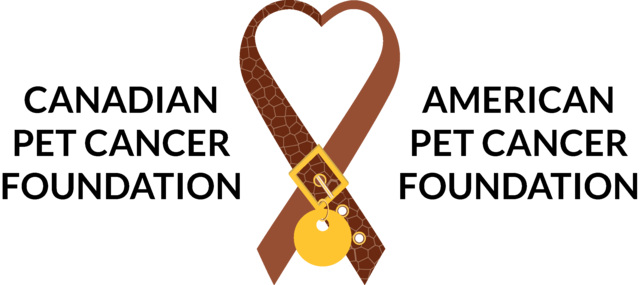- Relationship Between Genes and Cancer
- Relationship between genes and cancer, overview
- What is mutation and what causes a mutation?
- Types of mutations
- How do mutations lead to cancer?
RELATIONSHIP BETWEEN GENES AND CANCER, OVERVIEW
Luckily, the body has mechanisms to eliminate impaired cells or repair DNA damage. In fact, specific genes look after our pet’s cells by fixing genetic mistakes and controlling growth. However, sometimes the repair mechanisms fail, and the mutations persist. If your pet suffers changes to its genes, cancer may develop as a result. Often, a faulty repair process means the gene alterations go unnoticed, and cells with the defective gene continue to divide and grow uncontrollably.
Mutations arise for different reasons including biological changes to DNA, changes to the DNA sequence and structure because of physical, chemical, or biological substances, or lifestyle factors that increase cancer risk (like sun exposure or ingestion of tobacco products). These genetic alterations may occur in reproductive cells, thus passing from one generation to the next. But most mutations arise in non-reproductive cells and do not pass to offspring.
Not all mutations lead to cancer, and only those deemed high-risk are likely to give rise to cancer. Cancers such as lymphoma, mammary cancer, and mast cell tumors result from high-risk mutations.
Learning about your pet’s genetics can be complex, but appreciating how changes to your furry friend’s genes can influence cancer development gets you one step closer to understanding your beloved pet’s cancer diagnosis.

The Pet Cancer Foundation’s Website Editorial team is comprised of veterinarians, veterinary oncologists, and veterinary technicians, as well as scientific writers and editors who have attained their PhD’s in the life sciences, along with general editors and research assistants. All content found in this section goes through an extensive process with multiple review stages, to ensure this extended resource provides pet families with the most up-to-date information publicly available.
The team listing of those contributing to the information on this page is here:
Keep Your Pets Healthy Editorial Team
Last Updated: November 15, 2022
The Pet Cancer Foundation’s medical resource for pet owners is protected by copyright.
For reprint requests, please see our Content Usage Policy.

The Pet Cancer Foundation’s Medical Illustration team is comprised of medical illustration specialists and graphic designers that work in consultation with our team of experts to create the medical art found throughout our website. Though not all medical concepts require the assistance of imagery, when a page does contain a medical illustration, credit to the artist and our medical art director will be noted here.
The Pet Cancer Foundation’s medical imagery is protected by copyright and cannot be used without prior approval that includes a mutually signed licensing agreement. Please review our Content Usage Policy.
The following sources were referenced to write the content on this page:
Adamson, ED 1987, ‘Oncogenes in development’, Development, vol. 99, no. (4), pp. 449–471.
Haga, S, Nakayama, M, Tatsumi, K, Maeda, M, Imai, S, Umesako, S, Yamamoto, H, Hilgers, J & Sarkar NH 2001, ‘Overexpression of the p53 gene product in canine mammary tumors’, Oncol Rep, vol. 8, no. 6, pp. 1215-1219.
Lin J, Kouznetsova VL, Tsigelny IF. Molecular Mechanisms of Feline Cancers. OBM Genetics 2021; 5(2): 131;
London, CA, Kisseberth, WC, Galli, SJ, Geissler, EN & Helfand SC 1996, ‘Expression of stem cell factor receptor (c-kit) by the malignant mast cells from spontaneous canine mast cell tumours’, J Comp Pathol, vol. 115, no. 4, pp. 399-414.
Mealey, KL, Minch, JD, White, SN, Snekvik, KR & Mattoon, JS 2010, ‘An insertion mutation in ABCB4 is associated with gallbladder mucocele formation in dogs’, Comp Hepatol, vol. 9, no. 6, pp. 1-7.
Pang, L & Argyle, D 2016, ‘Veterinary oncology: biology, big data and precision medicine’, Vet J, vol. 213, pp. 38-45.
Setoguchi, A, Sakai, T, Okuda, M, Minehata, K, Yazawa, M, Ishizaka, T, Watari, T, Nishimura, R, Sasaki, N, Hasegawa, A & Tsujimoto H 2001, ‘Aberrations of the p53 tumor suppressor gene in various tumors in dogs’, Am J Vet Res, vol. 62, no. 3, pp. 433-439.
Weinstein, IB & Joe, AK 2006, ‘Mechanisms of disease: oncogene addiction—a rationale for molecular targeting in cancer therapy’, Nat Clin Pract Oncol, vol. 3, no. 8, pp. 448–457.
Wiese, DA, Thaiwong, T, Yuzbasiyan-Gurkan, V & Kiupel, M 2013, ‘Feline mammary basal-like adenocarcinomas: a potential model for human triple-negative breast cancer (TNBC) with basal-like subtype’, BMC Cancer, vol. 13, no. 403, pp. 1-12.
Wu, F.Y.; Iijima, K.; Tsujimoto, H.; Tamura, Y.; Higurashi, M. Chromosomal translocations in two feline T-cell lymphomas. Leuk. Res. 1995, 19, 857–860.
Yoshikawa, Y, Morimatsu, M, Ochiai, K, Ishiguro-Oonuma, T, Wada, S, Orino, K & Watanabe, K 2015, ‘Reduced canine BRCA2 expression levels in mammary gland tumors’, BMC Vet Res, vol. 11, no. 159, pp. 1-8.
The Pet Cancer Foundation’s medical resource for pet owners is protected by copyright.
For reprint requests, please see our Content Usage Policy.
